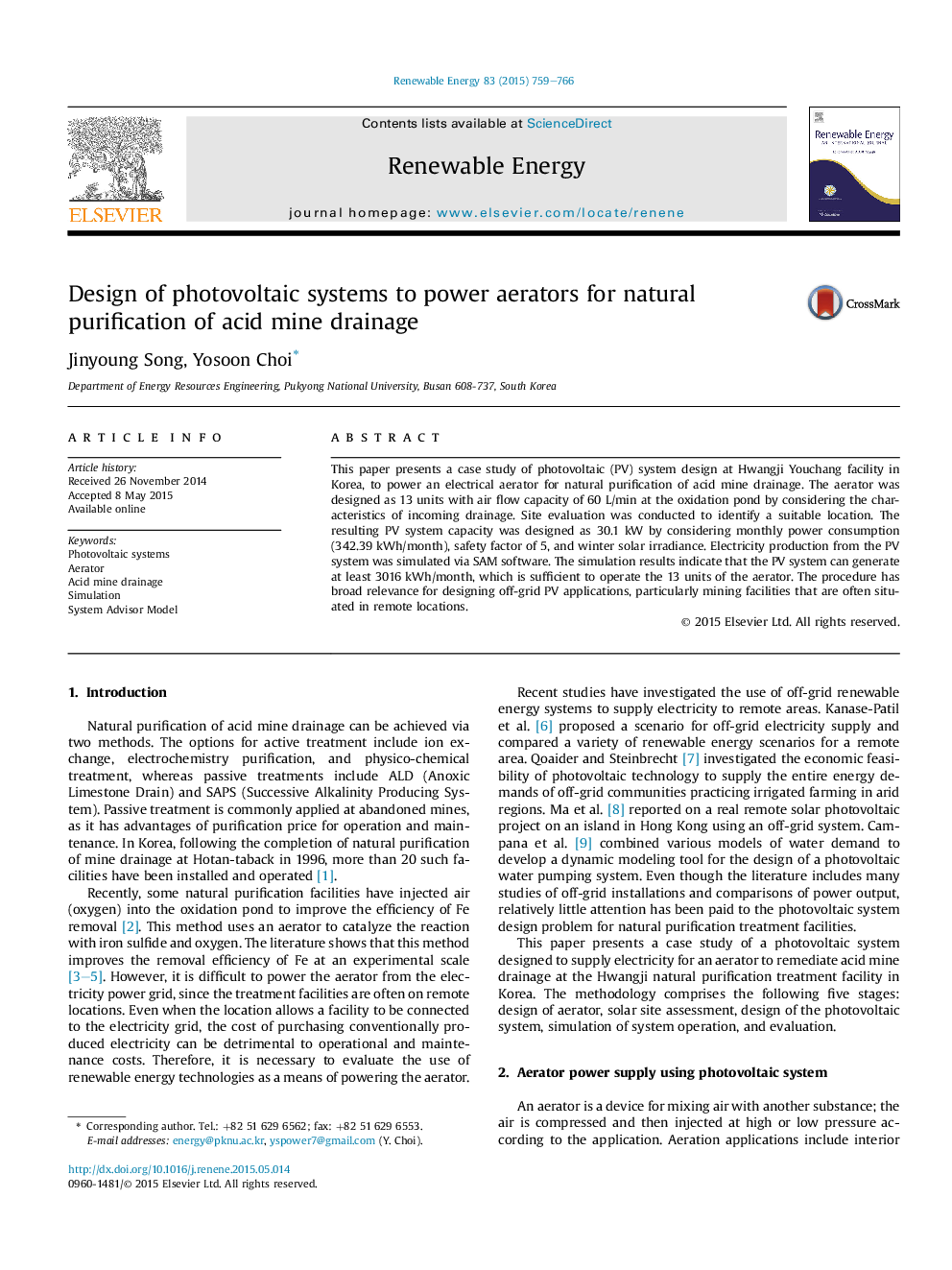| Article ID | Journal | Published Year | Pages | File Type |
|---|---|---|---|---|
| 6767254 | Renewable Energy | 2015 | 8 Pages |
Abstract
This paper presents a case study of photovoltaic (PV) system design at Hwangji Youchang facility in Korea, to power an electrical aerator for natural purification of acid mine drainage. The aerator was designed as 13 units with air flow capacity of 60Â L/min at the oxidation pond by considering the characteristics of incoming drainage. Site evaluation was conducted to identify a suitable location. The resulting PV system capacity was designed as 30.1Â kW by considering monthly power consumption (342.39Â kWh/month), safety factor of 5, and winter solar irradiance. Electricity production from the PV system was simulated via SAM software. The simulation results indicate that the PV system can generate at least 3016Â kWh/month, which is sufficient to operate the 13 units of the aerator. The procedure has broad relevance for designing off-grid PV applications, particularly mining facilities that are often situated in remote locations.
Related Topics
Physical Sciences and Engineering
Energy
Renewable Energy, Sustainability and the Environment
Authors
Jinyoung Song, Yosoon Choi,
